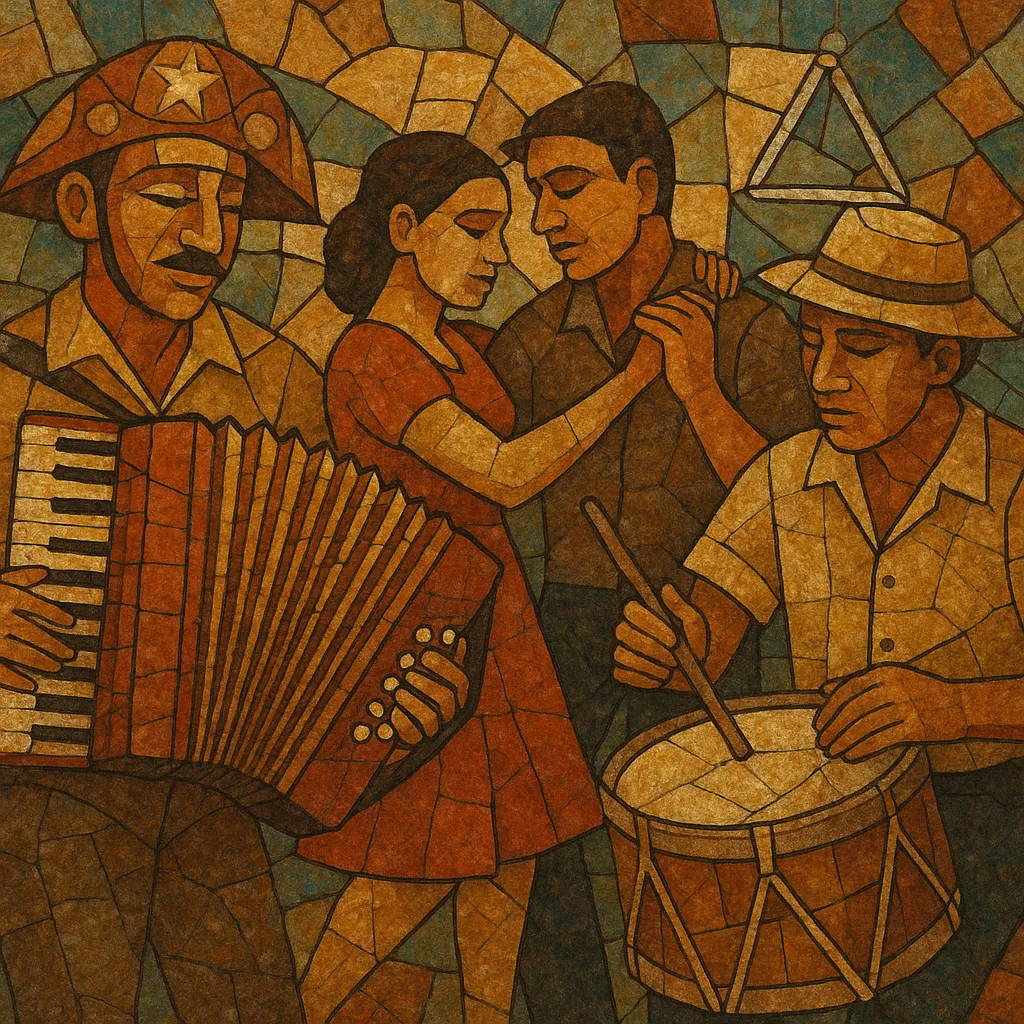Forró tradicional (also called forró pé-de-serra) is the classic Northeastern Brazilian dance-music style centered on the trio of sanfona (accordion), zabumba (bass drum), and triangle. It blends regional rhythms such as baião, xote, and xaxado, creating a driving yet warm groove designed for close partner dancing.
Characterized by syncopated percussion, lilting accordion melodies, and steady triangle patterns, the music ranges from mid-tempo sway to brisk, festive energy. Lyrics often portray rural life in the sertão, love and longing, migration to big cities, and the joy of June festivals (Festas Juninas), balancing celebration with bittersweet saudade.
Forró tradicional coalesced in Brazil’s Northeast in the 1940s, drawing on older rural dances and song forms such as baião, coco/embolada, and xaxado, alongside European couple-dance influences (xote from the schottische, polka, mazurka, and waltz). The iconic instrumentation—accordion, zabumba, and triangle—helped standardize a portable, dance-focused format.
Luiz Gonzaga, known as the “Rei do Baião,” popularized the style nationwide through radio and records, codifying its rhythmic vocabulary and lyrical imagery. With composer Humberto Teixeira, he created classics like “Asa Branca,” giving forró a national audience. Artists such as Jackson do Pandeiro, Marinês & Sua Gente, and Trio Nordestino expanded the repertoire across baião, xote, and arrasta-pé.
As Northeastern migrants moved to urban centers such as Rio de Janeiro and São Paulo, forró became a cultural bridge in dance halls and neighborhood parties, sustaining community identity. Virtuoso accordionists like Sivuca and later Dominguinhos refined harmonic language and performance technique while keeping the trio format central.
A roots-minded revival emphasized “pé-de-serra” aesthetics in response to more electrified variants. Festivals and Festa Junina circuits keep traditional ensembles active, while younger groups maintain dance-floor appeal. Although offshoots like forró universitário, forró eletrônico, and, more recently, piseiro modernized the sound, forró tradicional remains the reference point for repertoire, instrumentation, and dance steps.


